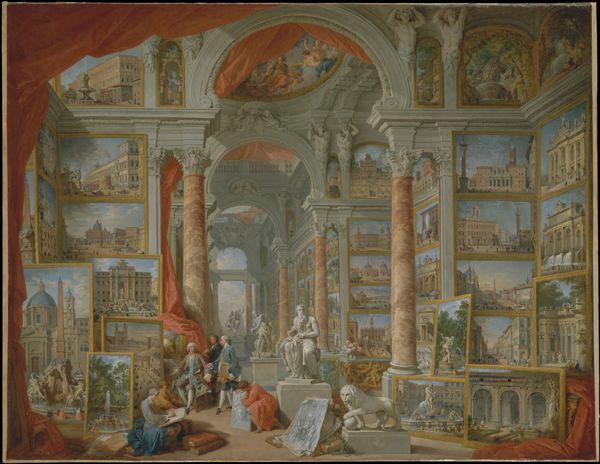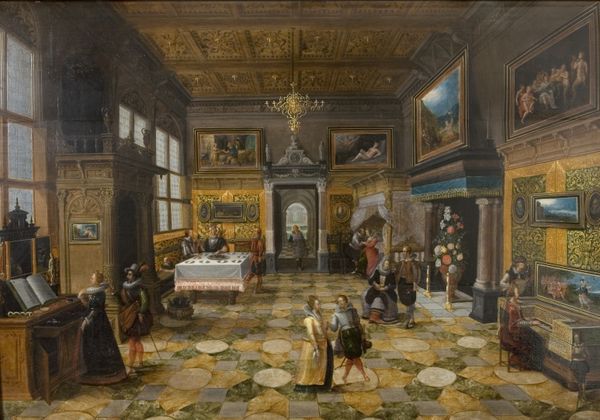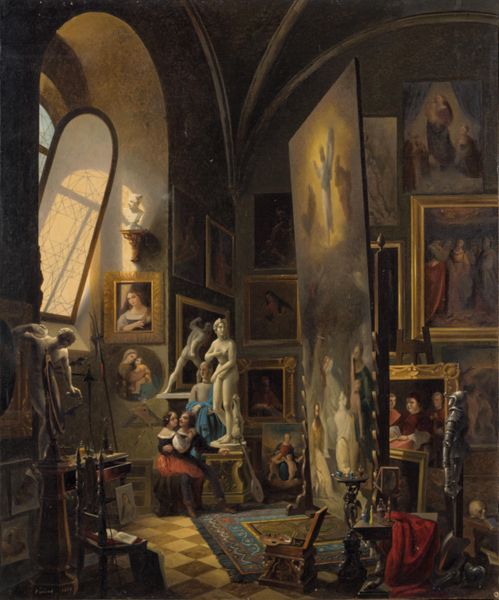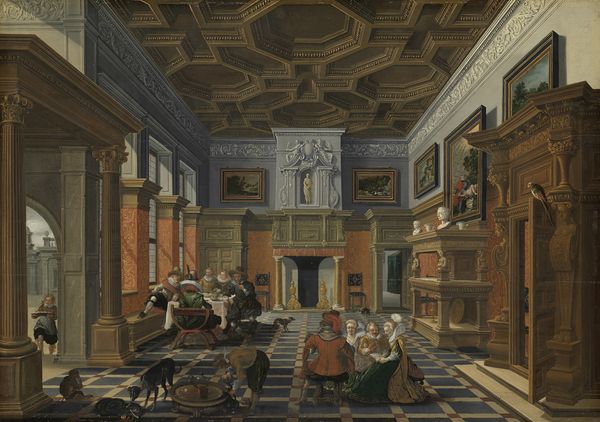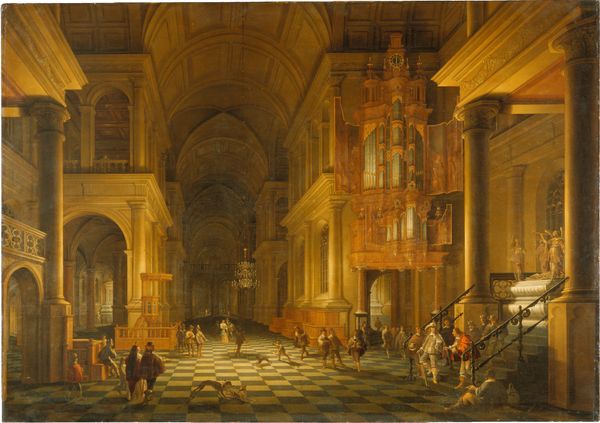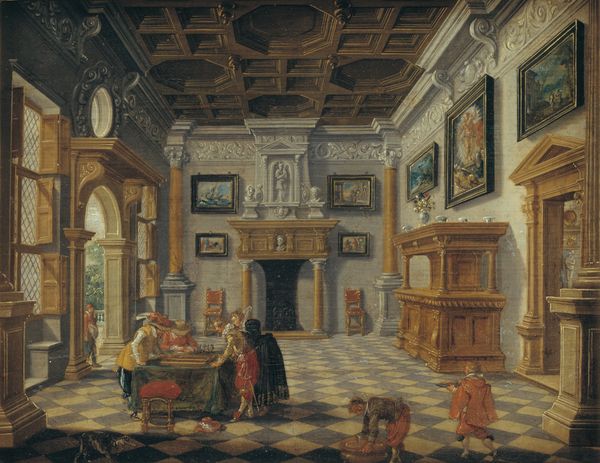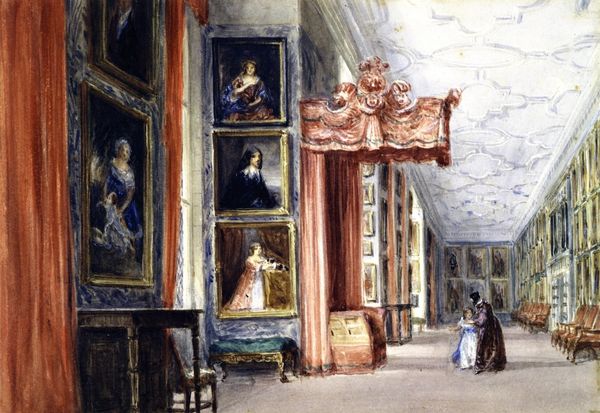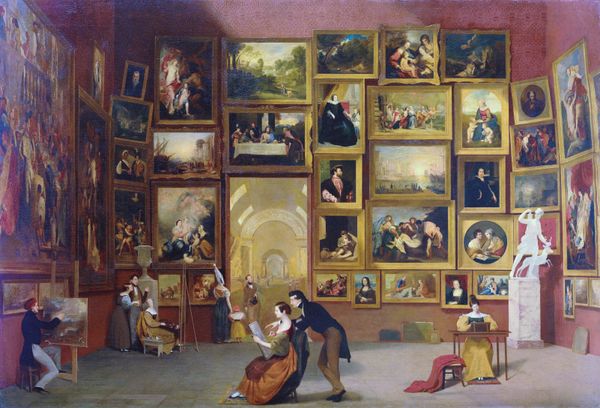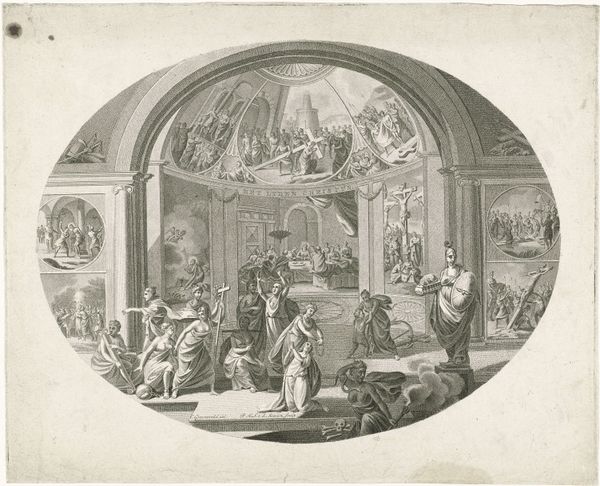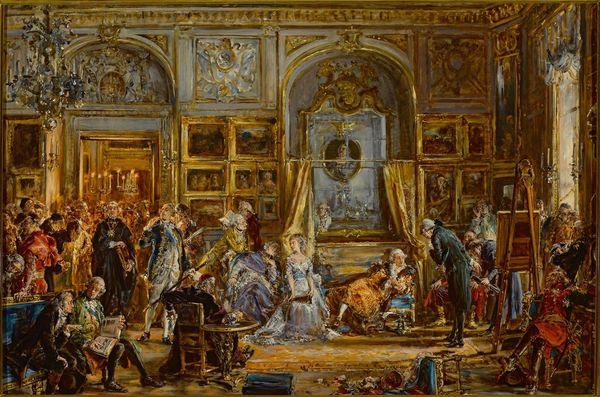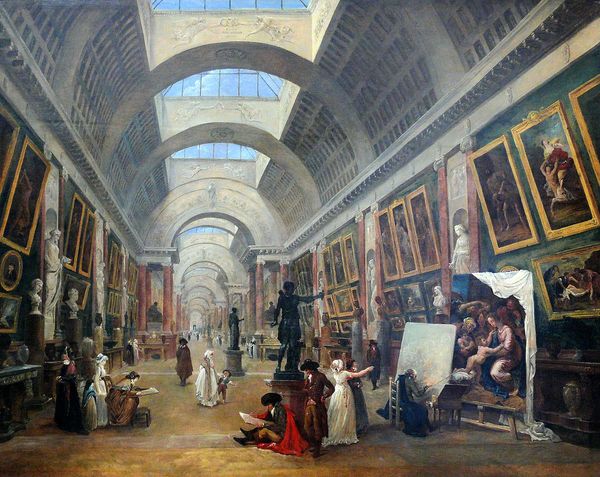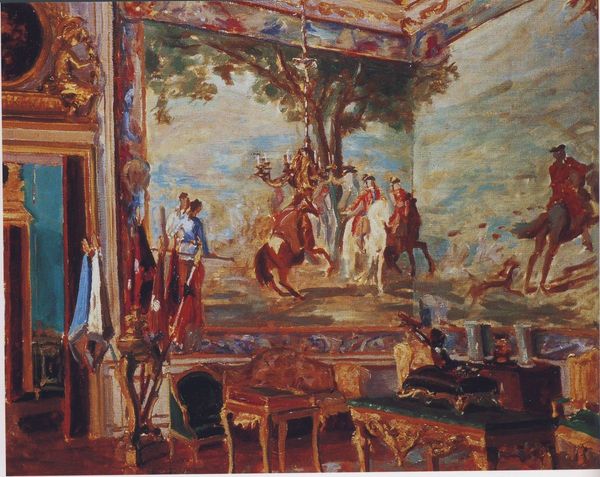
painting, oil-paint, sculpture, architecture
#
baroque
#
painting
#
oil-paint
#
romanesque
#
oil painting
#
classicism
#
sculpture
#
cityscape
#
genre-painting
#
history-painting
#
architecture
Dimensions: 67 3/4 x 90 1/2 in. (172.1 x 229.9 cm)
Copyright: Public Domain
Editor: Here we have Giovanni Paolo Panini's "Ancient Rome" from 1757, an oil painting currently housed at the Met. It’s overwhelmingly detailed. All these paintings *within* the painting give it a real sense of depth, but they also feel a little… nostalgic, maybe even melancholic? What do you see in this piece? Curator: I see a visual encyclopedia of cultural memory, Editor. Each painted canvas within the larger canvas functions like a symbolic key, unlocking layers of Rome’s historical and emotional significance. Notice how the artist arranges them not chronologically, but almost as an accumulation of potent symbols: the Colosseum, triumphal arches, the Pantheon. What emotions do these evoke for you? Editor: Awe, definitely. But also a sense of loss, considering their ruined state. It feels like looking at ghosts of greatness. Curator: Precisely. Panini is evoking what we call ‘memento mori,’ reminders of mortality, within the context of Rome's enduring legacy. Consider the way he depicts the contemporary figures amidst these artifacts – they are dwarfed, contemplating the weight of history. Don’t you agree that architecture, paintings, and sculpture act as potent visual cues, not just for remembering, but for feeling history? Editor: I never thought of it that way, but now that you mention it, the arrangement does seem intentional. It’s not just documentation; it’s a curated experience. Curator: Indeed! Panini understood the psychology of viewing. He presents us with these relics so we can ponder Rome's grandeur and the impermanence of human achievements, reflecting on continuity and change across ages. So, has this changed your initial feeling of melancholia at all? Editor: I think so. It’s still there, but it's tempered with a sense of connection, knowing that these symbols have resonated through time. There is also beauty in memory!
Comments
No comments
Be the first to comment and join the conversation on the ultimate creative platform.
